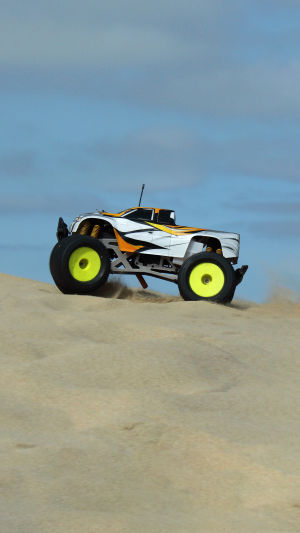Remote-controlled (RC) cars have come a long way since their humble beginnings, evolving from simple toys to sophisticated and high-performance machines that captivate enthusiasts of all ages.
These miniature vehicles, powered by electric or nitro engines, have carved a niche for themselves in the world of hobbies, providing a thrilling combination of technology, skill, and pure enjoyment.
One of the key attractions of RC cars lies in their versatility. Whether you're a beginner or an experienced hobbyist, there's an RC car for every skill level. Entry-level models often feature electric motors and are easy to control, making them perfect for those just starting. On the other end of the spectrum, advanced nitro-powered RC cars offer a more realistic driving experience, complete with engine sounds and the need for regular maintenance.
The technology behind RC cars has advanced significantly, enabling features that were once only seen in full-sized vehicles. High-end models are equipped with sophisticated suspension systems, adjustable shocks, and precision-engineered components that allow for fine-tuning to suit different terrains and driving styles. The introduction of brushless electric motors has brought about a significant increase in speed and power, rivaling their nitro counterparts.
RC car is not only suitable for adults to play but also is the favorite of tuning car players because it shares the same characteristics with those tuning cars, that is, you can make the car become what you want by constantly upgrading the parts, and at the same time, you can also show your personality. Although the RC is only an RC car, the way it is upgraded is not too different from the real car.
Chassis
Usually, a stock RC is divided into a KIT version, an 80% empty frame finished version, and an RTR version as soon as it leaves the factory. So what's the difference between these three versions? Firstly, the first version is a loose part, which needs to be assembled by the player himself according to the manual, and then this process is very complicated, which is more suitable for senior players. The second version is an already assembled chassis, which only requires you to install the electronics with the shell. The last version is straightforward to understand, you can buy and play it.
Shock absorbers
Shock absorbers are the "legs" of the RC, which can be divided into struts, adjustable struts, and air shocks. Players can choose different types of shock absorbers depending on the purpose of the vehicle and the road conditions.
Tires and Wheels
Like the wheels of tuned cars, the wheels of RC cars can also be personalized with various colors and styles to give your "car" a different look and feel. Also, with different types of tires, you can take your RC to more different places, even extreme terrain challenges.
Differentials
It can be said that the differentials on RC cars are the same as those on real cars. In this case, the differential on the racing RC eliminates the vehicle's understeer. The off-road RC's locking differential allows it to distribute power wisely to climb and get out of trouble easily.
"The RC is small, but it has all the essentials" is a perfect way to describe RC cars. It doesn't have the exorbitant cost of those real modified cars, and it also doesn't have the danger factor of intense driving in reality. Therefore, with the RC, you can wield your speed and passion for cars with impunity!





